The A7 IV is the latest upgrade to the popular A7 series, and the fourth iteration brings a good range of improvements to the table in comparison to its predecessor, the A7 III.
The A7C marked a departure from the A7/A9 design, with a closer resemblance to Sony’s APS-C series instead. Inside, the camera is much more similar to the A7 mark 3, with a few tweaks.
Let’s see how the A7 IV and A7C compare.
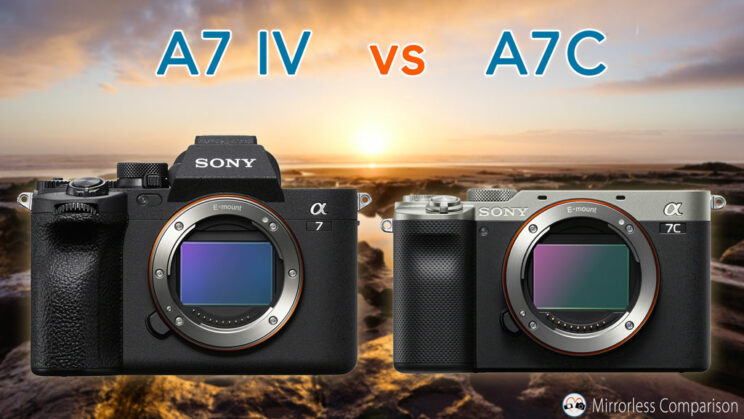
More Sony A7 IV comparisons:
A7 III vs A7 IV – A7 IV vs A7R IV
A7 IV vs A7S III – A7 IV vs A7R III
A7 IV vs A9 II – A7 IV vs A7C
A7 IV vs Z6 II – A7 IV vs R6
Ethics statement: the following is based on official information about the A7 IV and A7C. We were not asked to write anything about these products, nor were we provided with any sort of compensation. Within the article, there are affiliate links. If you buy something after clicking the link, we will receive a small commission. To know more about our ethics, you can visit our full disclosure page. Thank you!
1. Design and controls
The design of the A7C is very similar to the A6xxx APS-C series. Rather than having the viewfinder stick out on top at the centre, it is found on the left side and incorporated into the main frame of the camera.
The A7C is lighter and more compact than the A7 IV, and the front grip is smaller. One of the reasons for the A7 IV larger body is the heat dissipation structure designed to prevent overheating when recording 4K video.
- A7 IV: 131.3 x 96.4 x 79.8mm, 658g
- A7C: 124 × 71.1 × 59.7mm, 509g
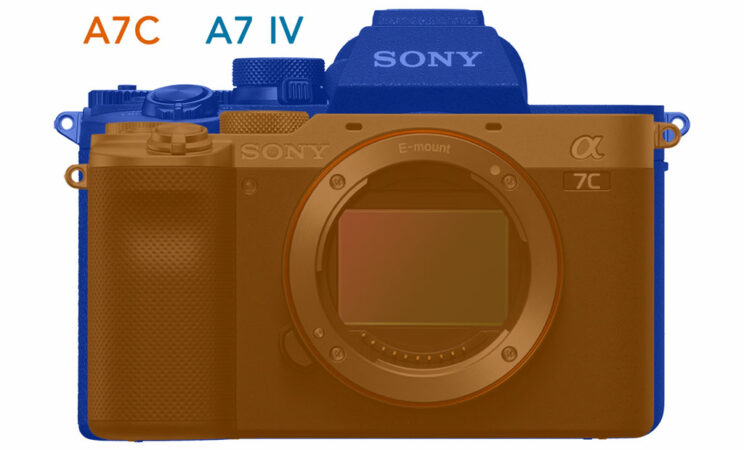
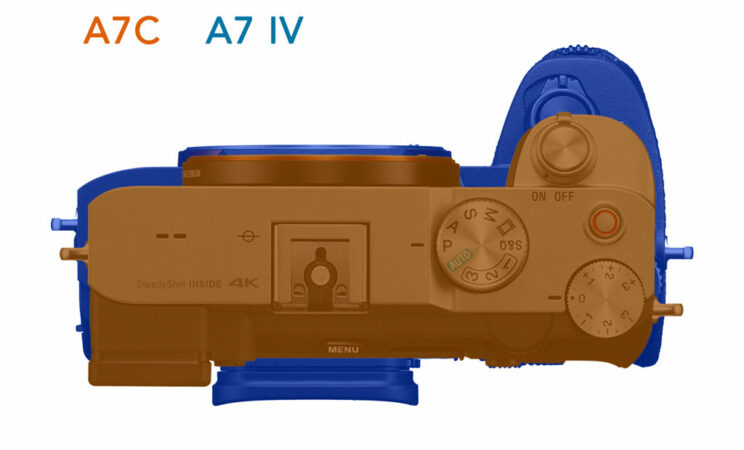
The two cameras are weather sealed but materials are a bit different: the A7 IV has magnesium alloy for the front, top and internal frame, whereas the A7C uses the same metal for the top, bottom and rear cover.
Concerning the aesthetics, the A7C can be found in black, or silver/black, whereas the A7 IV comes in one all-dark version only.
Because of the smaller design, the A7C has fewer buttons than the A7 IV: it lacks the front dial, the AF joystick on the rear and the photo/video switch underneath the main shooting dial on top.
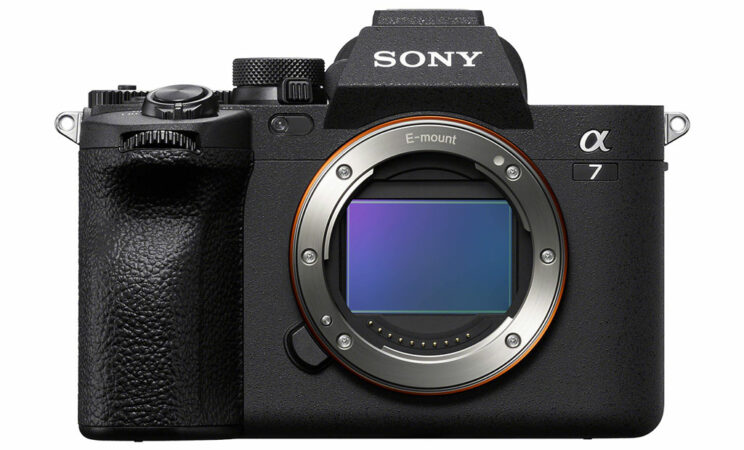
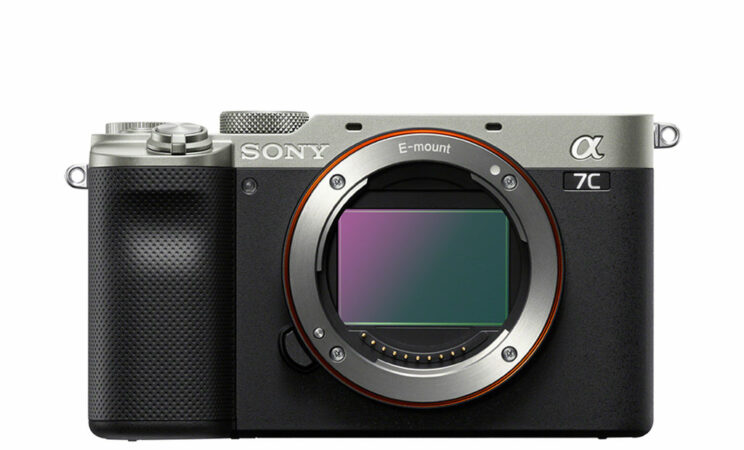

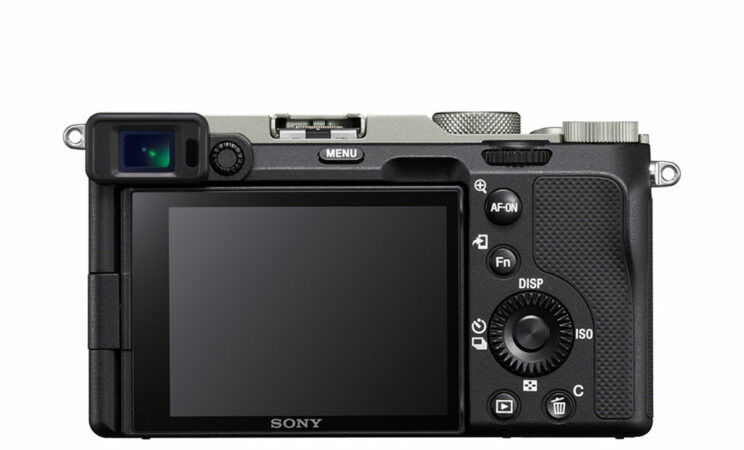
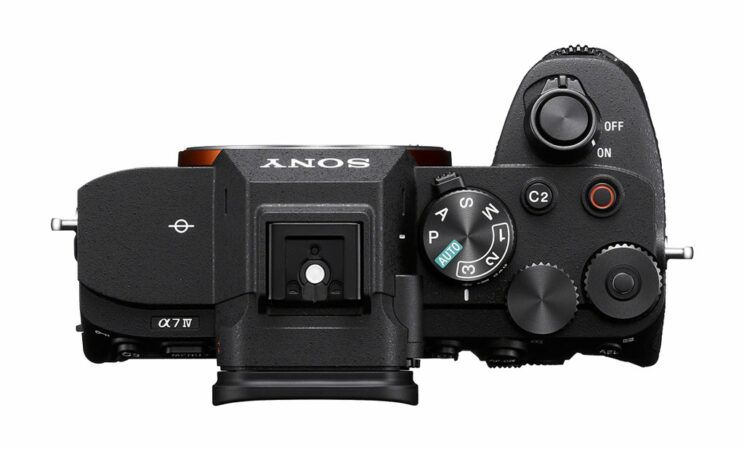

The A7 IV also offers more personalisation. All the dials can be customised depending on the shooting mode in use, and basic settings such as aperture, ISO and white balance can be set independently for stills and movie mode.
The rear monitor is touch sensitive, has a multi-angle mechanism on both cameras, and includes the possibility of a 180˚ rotation.
Other things you’ll find on the A7 IV are:
- a new menu system (compatible with touch sensitivity on the LCD)
- full sized HDMI port (vs Micro HDMI on the A7C)
- USB C 3.2 Gen2 10Gbps (vs Gen1 5Gbps on the A7C)
Last but not least, both cameras have a microphone input and headphone output (3.5mm mini-jack). Their multi-interface shoe is compatible with digital audio.
Finally, the battery is the same for the two cameras (NP-FZ100) but the A7C retains a better rating (CIPA): 740 frames versus 610 on the mark IV model (when using the LCD screen). Both cameras feature USB power delivery.
2. Memory card slots
The A7 IV can use two cards at the same time. The two slots are compatible with UHS-II SD cards, and slot number 1 can also accept a CFexpress card (Type A). The latter gives you the best results when it comes to buffer and continuous shooting speed, but is more expensive to buy.
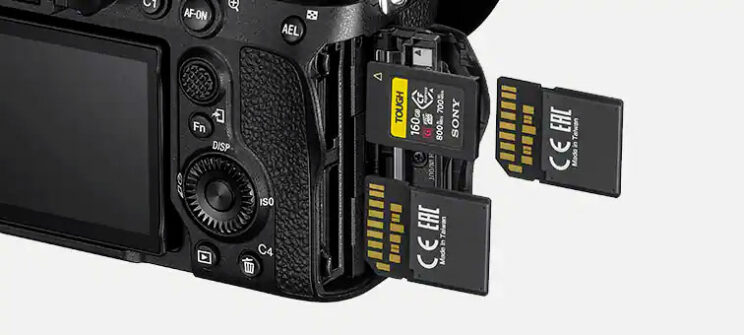
The A7C features only 1 SD card slot, and is compatible with the UHS-II standard.
3. Electronic Viewfinder
In addition to the different position of the EVF, which we already explained in the first point, the A7 IV viewfinder has more resolution (3.69M vs 2.36M dots) and is larger (0.5-in vs 0.39-in OLED panel).
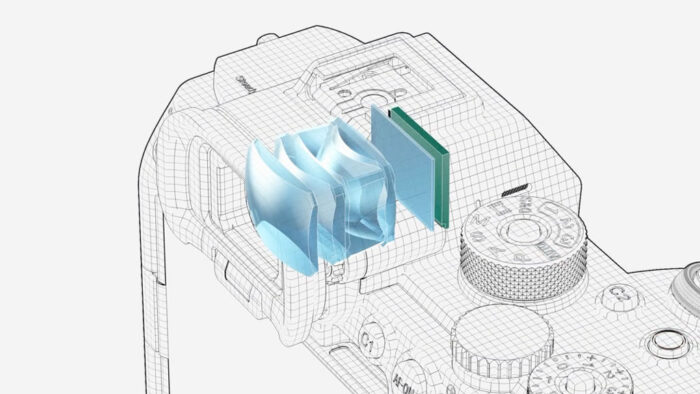
Consequentially, the magnification is also larger for the A7 mark 4 (0.78x vs 0.59x) and the eyepoint is longer (23mm vs 20mm).
As for the refresh rate, they both work up to 120Hz.
4. Image sensor
The A7 IV has a newly developed 33MP sensor, whereas the A7C shares the same chip as the A7 III (24.2MP).
The two sensors have a BSI structure and the one on the mark 4 model comes without an AA filter.
The ISO range is the same: 100 to 51,200 (normal), or 50 to 204,800 (extended).
The A7 IV features the faster BionZ XR processor (vs BionZ X for the A7C) and has a few extra settings, including Lossless compressed for the RAW files and HEIF (HDR) format.
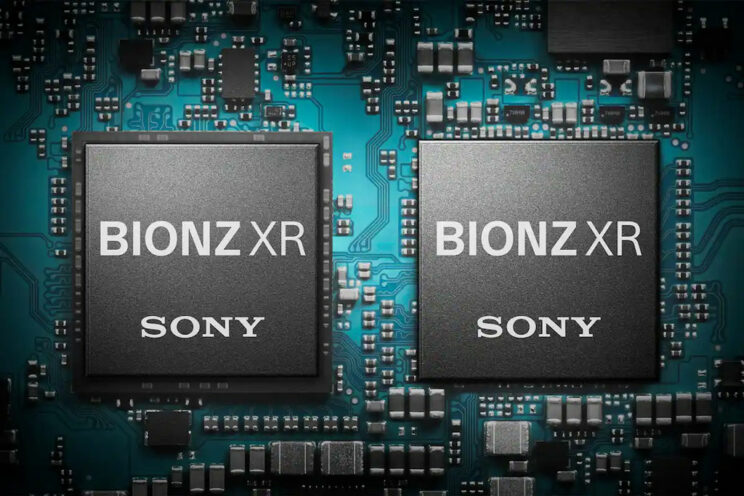
5. Autofocus
The A7 IV autofocus system uses 759 phase and 425 contrast detection points. It also features real-time tracking and real-time Eye AF, and the latter works with humans, animals and birds, for photos and movie recording.
The A7C has 693 phase and 425 contrast detection points. It also features real-time tracking and Eye AF, although the latter doesn’t work with birds, and can only detect humans in video mode.
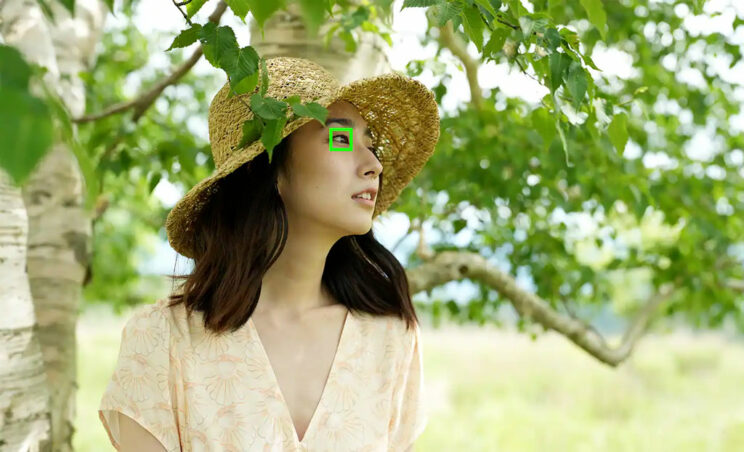
Low light sensitivity is the same for both cameras: -4Ev with a f/2 aperture.
They also share the same settings for video, including AF Transition Speed and AF Subject Shift Sensitivity to control the behaviour of the AF.
The A7 IV also has an extra setting called AF assist, which allows you to override the autofocus with the focus ring while working in C-AF and Tracking modes.
6. Speed and buffer
The A7 IV and A7C can take pictures at the maximum speed of 10 frames per second (with AF and exposure tracking).
That said, the A7 IV can work at that speed when Compressed RAW (lossy) is selected, or when shooting in JPG. If you activate Lossless compressed or Uncompressed, the speed drops to 6fps. Furthermore, early reviews such as that of Gordon Laing suggest that 10fps with compressed RAW requires the CFexpress card.
Another difference concerns the buffer memory, or in other words, the capacity to capture a certain number of images at full speed.
The A7 IV has an impressive rating of more than 1,000 frames with JPG or lossy compressed RAW when using the faster CFexpress Type A card.
The A7C can manage about 220 JPG or 115 compressed RAW by comparison.
7. Video
The movie recording options mark a big difference between these two cameras. Mainly, the A7 IV has the following capabilities that you won’t find on the A7C:
- 10-bit 4:2:2 internal recording
- 4K 30p without sensor crop
- 4K 50/60p (in Super35 mode, aka 1.5x crop)
- All-Intra compression option up to 600Mbps
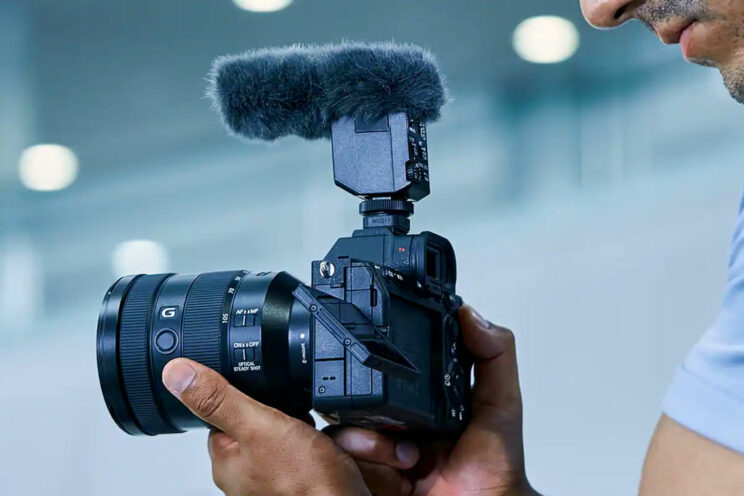
The table below summarises all the main differences.
| A7 IV | A7C | |
|---|---|---|
| 4K 24/25p | no crop | no crop |
| 4K 30p | no crop | 1.2x crop |
| 4K 60p | 1.5x crop (S35) | n.a. |
| 10-bit 4:2:2 | internal / HDMI | n.a. |
| 8-bit 4:2:2 | n.a. | HDMI |
| 8-bit 4:2:0 | internal | internal |
| H.265 | yes | n.a. |
| Max. bitrate | 600Mbps (ALL-I) | 100Mbps |
| Rec. limit | no | no |
| 1080p | Max. 120p | Max. 120p |
| S-Log2 / 3 | yes | yes |
| HLG | yes | yes |
| S-Cinetone | yes | no |
When recording 4K, the A7 IV uses the equivalent of 7K with full pixel readout and no pixel binning, whereas the A7C does the same from a 6K area (24/25p) or 5K area (30p).
On the A7 IV you will also find the Creative Looks, a new set of picture profiles that replace the old Creative Styles (found in the A7C). Unlike the Creative Styles, the Looks are designed to be used for stills and video. There is also a Soft Skin Effect mode to smooth skin tones.
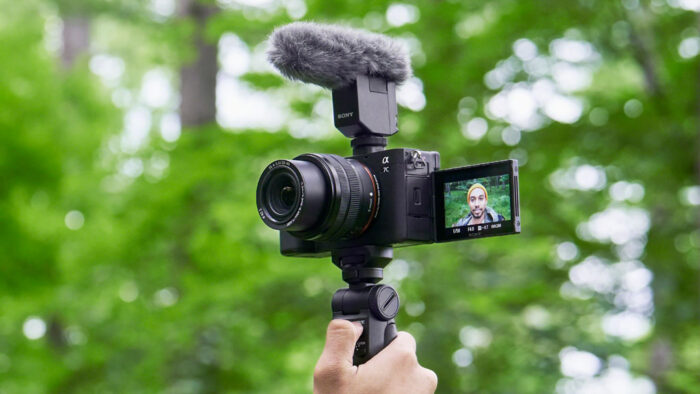
For users that require more precise control, or need to match a Sony cinema camera, the Picture Profiles are available on the two cameras.
The A7 IV also packs additional settings that allow you to reduce focus breathing for example, and vary the White Balance while recording without an abrupt change of colours in the footage.
8. Five axis stabilisation
The two cameras come with stabilisation on the sensor, which works with a total of 5 axis (roll, X, Y, pitch, yaw).
The A7 IV has a slightly higher compensation rating of 5.5 stops, versus 5 stops on the A7C. This means that, on paper, you can take a picture hand-held with a shutter speed 5.5 times (or 5 times) slower than the recommended value (for example 1/50s with a 50mm lens).
When recording video, the A7 IV offers an extra setting: the Active mode. It uses the data from the camera’s gyro sensor to improve the stabilisation result. The field of view is cropped a little bit as a result though (about 1.1x).
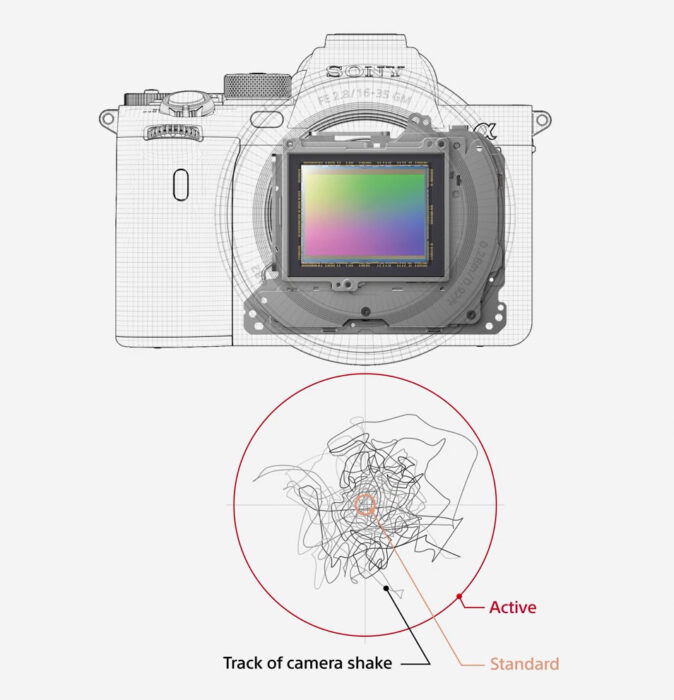
Both cameras give you the option of stabilising the video footage in post using Sony’s Catalyst software, which can read the data from the gyro sensor of the cameras and give better results than the normal warp stabilisation of video editing softwares.
9. Streaming
The A7 IV packs a decent number of extra features. One of them is the possibility of using the camera as a webcam with a simple USB connection, without the need of extra software to make it work.
You only need to select the option in the menu, and connect the camera to your computer with a USB cable. The A7 IV will appear as a video/audio source on your streaming platform.

The streaming mode can work in Full HD up to 60p, or in 4K but at the reduce frame rate of 15p.
With the A7C, streaming is also possible but you need to install the Imaging Edge Webcam software on the computer, and you have less control over the video resolution.
10. Price
The A7 IV is the more expensive product and can be found for $2500, £2400 or €2800.
The A7C is available for $1800, £1700 or €1900.
Note: prices are for the body, as of late October 2021.
Conclusion
I think it is safe to say that the A7 IV is a more complete proposition thanks to the improvements to the autofocus, the higher resolution sensor, the many settings added for movie recording, and various extra features.
The A7C distinguishes itself with a more compact body, which is its main selling point. It is also less expensive, another factor not to underestimate.
Which one would you go for? Let us know in the comments!
Check price of the Sony A7 IV on
Amazon | Amazon UK | B&H Photo | eBay
Check price of the Sony A7C on
Amazon | Amazon UK | B&H Photo | eBay
Second-hand Sony gear on
MPB US | MPB UK
More Sony A7 IV comparisons:
A7 III vs A7 IV – A7 IV vs A7R IV
A7 IV vs A7S III – A7 IV vs A7R III
A7 IV vs A9 II – A7 IV vs A7C
A7 IV vs Z6 II – A7 IV vs R6
